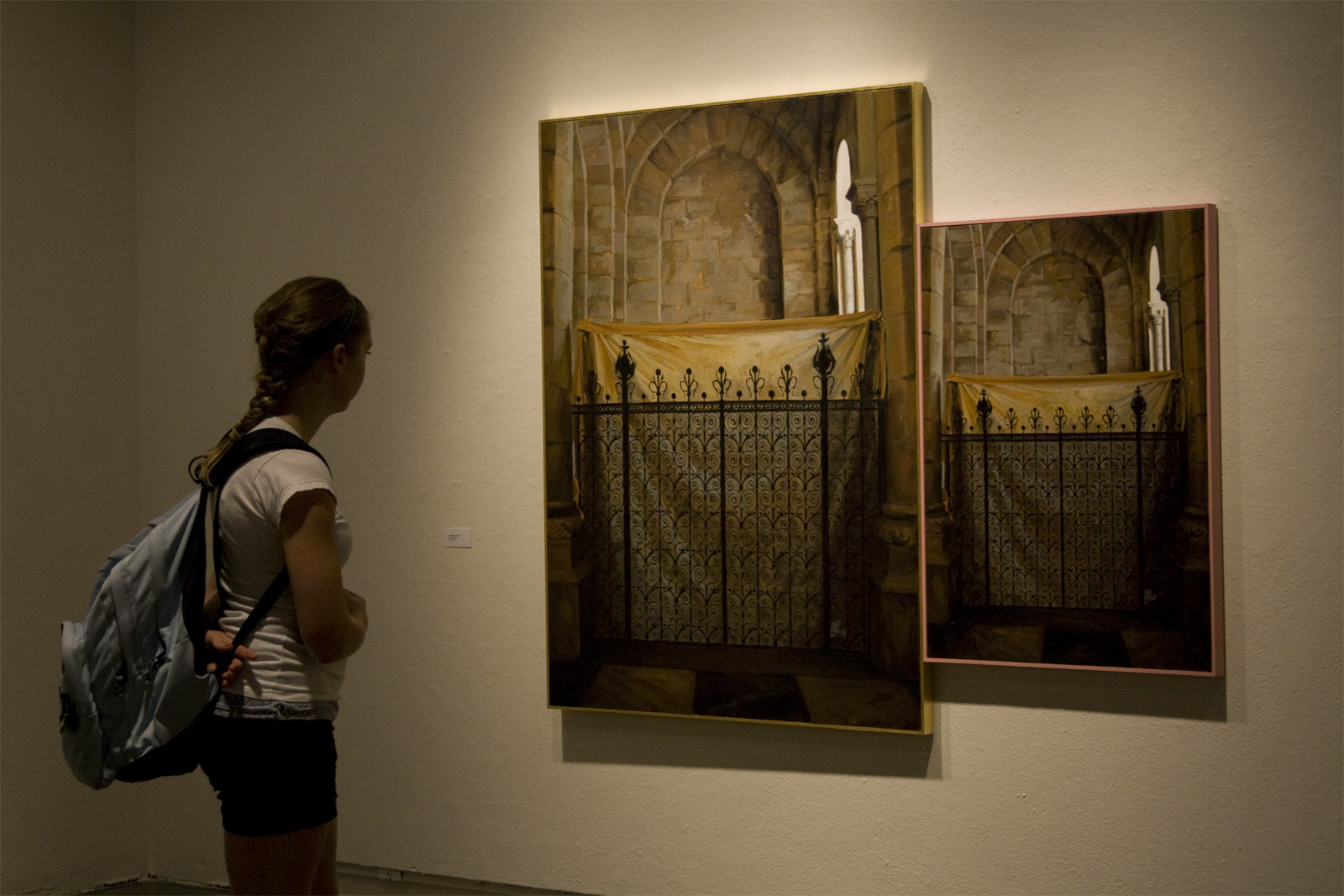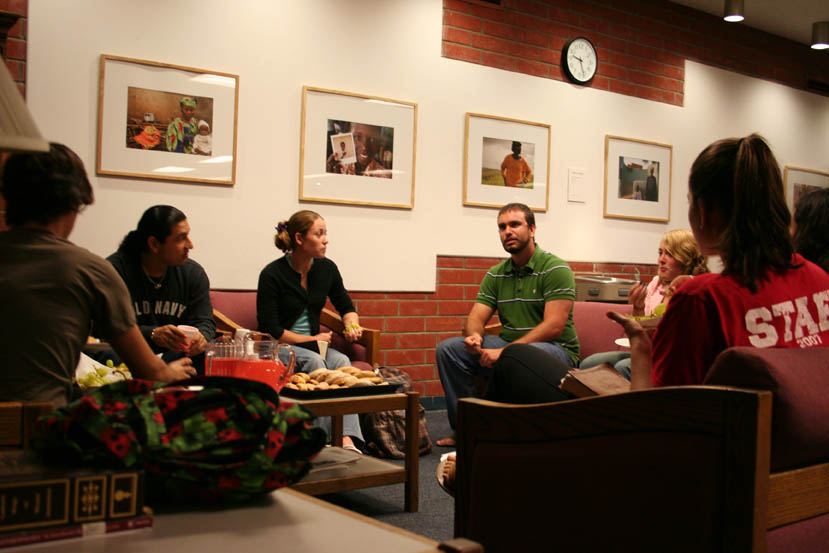Two shows opened in the Biola art gallery this week presenting the work of Jon Anderson, a Biola faculty member and art department professor.
Captivating yet quietly complex, the work in both shows offers viewers a chance to appreciate painting on several levels. One can enjoy them simply for their generous offering of intricate patterns and textures, but also for the questions they raise about communication.
“Impasse” hangs in the main gallery, a collection of images depicting gates or entryways that are frequently blocked from view by scaffoldings, hanging cloths, or closed doors. As the name suggests, the paintings communicate a sense of being caught in a deadlock: a space that invites entrance, but the way forward is visually blocked off. There is also a great deal of repetition—a smaller painting of the same scene often hangs next to its larger kin.
“Construction,” in the annex gallery, is populated by pieces where the wood paneling is made visible in various ways: appearing as the skeleton of a house, the ground where people are planting and digging, or simply through an abstract pattern interrupting our view of a tree. The name “Construction” makes obvious references to construction as an activity, as made evident through the houses, or implies growth and development. Having the wood paneling show through the paintings helps bolster this connection between construction and the works themselves: after constructing the paneling, the artist is building another with paintings.
While “Impasse” and “Construction” are housed in separate rooms they share a similar goal, approaching it from only slightly different angles. Both shows present images that are painted in a realistic fashion, creating a sense of depth, yet there is always some reminder that they are also flat images on a flat surface. Seeing the wood panel in “Cultivation” is the most obvious reminder of the flatness of the painting. Works such as “Ology” accomplish it by putting a pattern over the painting that interrupts the perspective. This creates tension between the two perspectives, becoming a kind of wonderful visual metaphor for the tension that exists in the act of communication, particularly communicating spiritual matters. This theme joins the two shows.
Painting is an attempt to communicate something immaterial, such as a vision in the artist’s mind, by using what is essentially dirt (pigments for oil paints come from minerals and metals) mixed with oil, brushed over a flat surface. The painting is always going to stop short of what it is trying to convey by the fact that, no matter how real the image may appear, we cannot step into the world it depicts. Barring the appearance of Mary Poppins, the viewer is left struggling, not just at the closed gate in the painting, but by the materials of the canvas.
The artist emphasizes this struggle further by including words and text in his images. Many of the titles in “Impasse” are taken from words visible in the painting, such as “Celestial” or “Ology”. The man in “Cultivation” is holding a flag printed with the alphabet in gold lettering. These inserted letters serve as clues, pointing to humanity’s other main form of communication: words. Yet, like painting, words struggle as well to fully communicate concepts, spiritual and otherwise: imagine explaining what “color” is to someone who has been born blind.
Yet the show is not merely an exercise in frustration – it’s true you can’t fully express through either image or word. But mud and wind, like paint and words, can still be used to create that longing for the inexpressible, a desire to slip through the closed gate and experience what lies beyond the impasse, which is precisely what these








